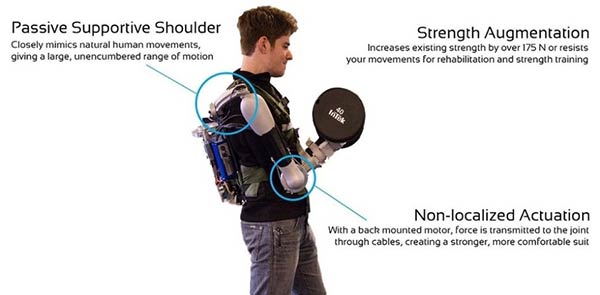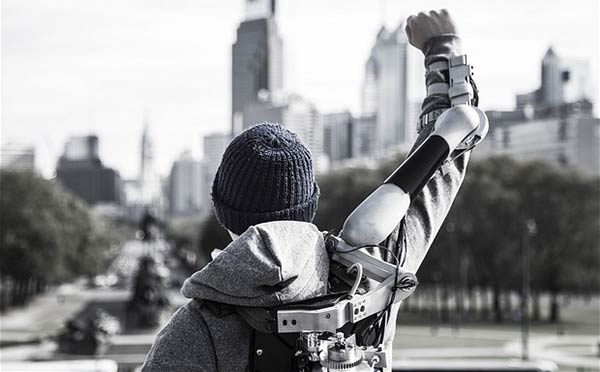The winner of the 2013 James Dyson Award first prize is the Titan Arm: A Powered, Upper Body Exoskeleton. The team has won £30,000 plus a further £10,000 for the engineering department at the University of Pennsylvania, where the Titan Arm developers are students. The battery powered exoskeleton augments a user’s arm strength by 18Kg. It is unthethered and can stream its data to computers for control and measurement.
The Titan Arm developers say that the exoskeleton was developed with two purposes; to help workers who have to lift heavy objects in their day to day jobs and for healthcare applications. It is interesting to see the system contains a mechanical braking system so heavy objects can be held in place with very little fatigue or stress on the user's arm.

In the area of healthcare the Titan Arm can help people who are recovering from injuries or otherwise infirm and who need physical therapy or mobility assistance. The developers say the powered exoskeleton can “help stroke and injury victims rebuild muscle and relearn fine motor control. It also provides detailed quantitative feedback to doctors which can be used to motivate their patients by tracking improvement over time.”

The development team were inspired to help minimise the demoralising loss of upper body mobility which affects many people’s independence. They noted that current exoskeleton solutions are prohibitively expensive costing over $100,000 or so. Also most existing designs include aided legs which the team assessed as less important to patients. The Titan Arm is made with “lean principles,” such as 3D printing and CNC machining and should be manufacturable for under $2,000. The developers have also decided to make the design open source as a “platform for empowerment.”













